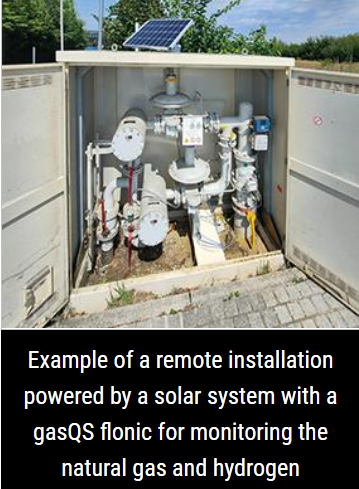The ideal blend

Florian Krischker & Bradley Visser discuss correlative determination of blended hydrogen in natural gas.
Hydrogen can be used as a seasonal intermediate storage and is considered one of the solutions for a sustainable energy supply. However, hydrogen behaves quite differently from the natural gas that the gas grid was built for, which mainly consists of methane. The admixture of hydrogen to the gas grid leads to some challenges that need to be overcome. To understand the changed behaviour of the gas grid, cost-efficient correlative measurement methods can make an important contribution.
When hydrogen is injected into the natural gas grid, often referred to as hydrogen blending, hydrogen gas is mixed with the existing natural gas in the pipeline infrastructure. This is done with the aim of reducing carbon emissions and making the transition to a more sustainable energy system, while making use of the existing infrastructure. Current hydrogen blends are typically in the range of 2 to 30% hydrogen by volume, which is expected to increase in the future.
The challenge is that natural gas pipelines and infrastructure were designed for methane, not hydrogen and the technology installed is not always suitable. Furthermore, the issue of hydrogen compatibility goes beyond the pipeline network. The thermophysical properties of hydrogen are considerably different to those of natural gas, which makes it important to determine the hydrogen content to optimise the safety and performance of combustion processes. Furthermore, to ensure fairness, billing of gas use should be shifted from volumetric metering to metering based on gas energy content, due to the considerably lower volumetric energy content of hydrogen and the potential variability of hydrogen content within the distribution networks themselves.
Thankfully, the differences in thermophysical properties makes detecting hydrogen concentrations in natural gas relatively simple, assuming suitable physical parameters are monitored. Sensors that measure thermal conductivity (λ), heat capacity (cp), thermal diffusivity (α) or density (ρ) of a gas mixture are well suited to determine hydrogen concentrations, as these properties vary by as much as a factor of ~6 to 9 for hydrogen compared to a H-type natural gas. For blending applications in which the composition of the natural gas is known, then the measurement of only one of these gas parameters is sufficient to determine the hydrogen content to high accuracy. Gas quality instrumentation based only on thermal conductivity measurements, such as the gasQS static, is particularly popular for the determination of hydrogen concentration as the underlying sensors are fast, robust, reliable and do not require a defined gas flow. In situations where the natural gas quality is unknown or is dominated by local sources (biogas plants, etc.) with temporal variability, then the measurement of a single gas parameter is insufficient to accurately determine hydrogen content.
Correlative measuring instruments such as the gasQS flonic can determine hydrogen content of complex and variable gas mixtures by measuring the thermal conductivity, heat capacity and density of the gas.
In the ongoing H2 MiX project up to 20 volume % of hydrogen has been blended into the L-gas network in two districts close to Cologne. The local energy supplier GVG Rhein-Erft and the network operator Rheinische NETZGesellschaft are supplying the hydrogen-natural gas mixture to heat both private households and businesses. TÜV Rheinland is responsible for the technical monitoring of the project. To measure the hydrogen content at different locations in the grid, several dozen gasQS static and flonics were installed in the network and linked together via GSM.
In conclusion, hydrogen blending in the natural gas grid represents a promising step toward a more sustainable energy future. While it comes with its share of challenges, including pipeline compatibility, safety concerns, and equipment adaptation, these hurdles are being addressed through innovative technologies and collaborative projects. With solutions such as the gasQS instruments, hydrogen blending can be approached in a safe and fair way.
1.The news above mentioned with detailed source are from internet.We are trying our best to assure they are accurate ,timely and safe so as to let bearing users and sellers read more related info.However, it doesn't mean we agree with any point of view referred in above contents and we are not responsible for the authenticity. If you want to publish the news,please note the source and you will be legally responsible for the news published.
2.All news edited and translated by us are specially noted the source"CBCC".
3.For investors,please be cautious for all news.We don't bear any damage brought by late and inaccurate news.
4.If the news we published involves copyright of yours,just let us know.
BRIEF INTRODUCTION
Cnbearing is the No.1 bearing inquiry system and information service in China, dedicated to helping all bearing users and sellers throughout the world.
Cnbearing is supported by China National Bearing Industry Association, whose operation online is charged by China Bearing Unisun Tech. Co., Ltd.
China Bearing Unisun Tech. Co., Ltd owns all the rights. Since 2000, over 3,000 companies have been registered and enjoyed the company' s complete skillful service, which ranking many aspects in bearing industry at home and abroad with the most authority practical devices in China.




